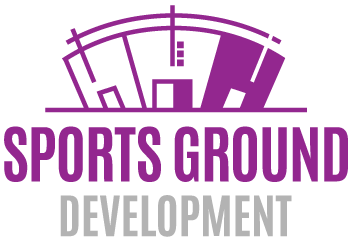In the realm of sports ground development, the adage “build it, and they will come” resonates profoundly. However, it’s crucial to remember that inclusivity should be at the forefront of our minds when envisioning and constructing sports facilities.
Accessibility is not merely a box to tick; it’s a fundamental aspect of creating spaces that cater to the diverse needs of our communities.
In this blog post, we delve into the significance of inclusive sports grounds and explore the principles of designing them with accessibility in mind.
The Significance of Inclusive Sports Grounds
Creating inclusive sports grounds is about more than just meeting legal requirements or ticking off a checklist. It’s about embracing the values of diversity and equality while opening the doors to sports for everyone, regardless of their physical abilities.
Inclusivity in sports grounds extends beyond the playing field; it encompasses the entire experience – from arriving at the venue to accessing amenities and enjoying the game.
Moreover, inclusive sports grounds serve as powerful tools for empowerment. Sports can transcend physical limitations and offer a sense of belonging to individuals with disabilities.
By making sports accessible, we not only provide opportunities for physical activity but also foster a sense of community and self-confidence among those who may have previously felt excluded.
Designing for Accessibility
Creating inclusive sports grounds begins with thoughtful design. To achieve this, we must consider the needs of individuals with a range of disabilities.
Wheelchair users, those with visual impairments, and people with mobility issues should all be able to enjoy the facilities without hindrance.
Key considerations include providing accessible entrances and pathways, offering seating options with clear lines of sight, and ensuring that restroom facilities are equipped to accommodate various needs.
For example, installing ramps and elevators can make multi-level sports venues accessible to all. The strategic placement of handrails and non-slip surfaces can improve safety for everyone.
In addition to physical infrastructure, inclusive design also involves sensory considerations. Providing tactile guides, auditory cues, and clear signage can aid those with visual or hearing impairments.
Ultimately, inclusive design strives to create an environment where individuals of all abilities can participate in sports, socialize, and feel welcomed.
Challenges and Solutions
While the importance of inclusive sports ground development is undeniable, it comes with its fair share of challenges. One common hurdle is budget constraints.
Integrating accessibility features can incur additional costs, and securing funding can be a formidable task.
However, solutions exist for these challenges. Governments and local authorities often offer grants and financial incentives for inclusive sports ground projects.
Engaging with local disability advocacy groups and organizations can also provide valuable support and resources.
Moreover, inclusive design doesn’t always require substantial financial investments.
Many improvements, such as clear signage or better lighting, can be implemented at a relatively low cost. Additionally, long-term benefits, such as increased attendance and community support, can outweigh the initial expenses.
Engaging the Community
Engaging the local community in the planning and design process of sports grounds is a crucial step in ensuring inclusivity.
Community involvement not only brings valuable insights but also fosters a sense of ownership and pride in the facilities.
One effective approach is to host community meetings and workshops, where residents and potential users can share their ideas and concerns.
These sessions can provide valuable feedback on the specific needs and desires of the community. It’s essential to actively listen to these voices and incorporate their suggestions into the design where feasible.
Moreover, involving local schools, disability advocacy groups, and sports clubs in the planning process can help create a sense of shared responsibility.
Community engagement goes beyond the initial stages and should continue throughout the life of the sports grounds, with regular feedback mechanisms in place to address any evolving needs.
Conclusion
In conclusion, the creation of inclusive sports grounds is a dynamic and evolving process that encompasses community engagement and future-focused design.
Engaging the local community empowers residents, promotes a sense of belonging, and ensures that the facilities meet the specific needs of the area.
Moreover, keeping an eye on future trends and innovations allows us to adapt and enhance sports grounds to remain inclusive and relevant in an ever-changing world.
By actively involving the community and embracing emerging technologies and sustainability practices, we can create sports grounds that truly belong to everyone, leaving no one behind in the world of sports.
So, let’s continue building not just sports facilities but vibrant, inclusive communities where the love of the game knows no boundaries, both today and in the future.

